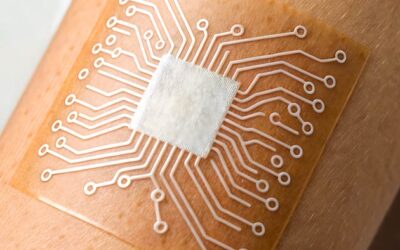by Mark Sanna, DC, ACRB Level II, FICC •
President & CEO Breakthrough Coaching •
As a practice management consultant for multidisciplinary practices, I’ve seen firsthand the transformative impact that regenerative medicine can have on patient outcomes. Among the most promising therapies in this field is Platelet-Rich Plasma (PRP) therapy, which has garnered significant attention for its ability to promote healing and regeneration, particularly in osteoarthritic joints. Understanding the role of platelets in PRP therapy is crucial for both practitioners and patients alike, as it offers insight into how this cutting-edge treatment works to restore joint health and function.
Platelets: More Than Just Clotting Agents
Traditionally, platelets are known for their role in clotting blood and stopping bleeding. However, their function extends far beyond hemostasis. In PRP therapy, platelets play a central role as signaling cells that release a variety of growth factors and cytokines, which are crucial for tissue repair and regeneration.
PRP Therapy: Harnessing the Power of Platelets
PRP therapy involves drawing a small amount of the patient’s blood, processing it to concentrate the platelets, and then injecting this platelet-rich plasma back into the patient’s body, specifically into the site of injury or degeneration. The concentrated platelets contain a high level of bioactive proteins, including growth factors like platelet-derived growth factor (PDGF), transforming growth factor-beta (TGF-β), vascular endothelial growth factor (VEGF), and others. These growth factors are key players in the body’s natural healing process.
Platelets as Signaling Cells
When injected into osteoarthritic joints, platelets act as signaling cells that initiate and regulate the healing process. Upon activation, these platelets release their growth factors, which then bind to the receptors on the surface of cells within the joint tissues. This binding process triggers a cascade of cellular activities that lead to the repair and regeneration of damaged tissues.
For example, in articular cartilage—a key tissue affected by osteoarthritis—these growth factors stimulate the proliferation and differentiation of chondrocytes, the cells responsible for maintaining healthy cartilage. Additionally, they promote the synthesis of extracellular matrix components, such as collagen and proteoglycans, which are essential for the structural integrity of cartilage.
Stimulating Regeneration and Healing
The growth factors released by platelets in PRP therapy do more than just repair tissue; they also create a regenerative environment that encourages the formation of new, healthy tissue. In osteoarthritic joints, where cartilage is worn down, PRP therapy has been shown to slow the progression of degeneration, reduce inflammation, and even promote the regeneration of cartilage. This is particularly significant because, unlike other tissues in the body, cartilage has a limited ability to heal on its own.
The Clinical Impact of PRP in Osteoarthritis
Studies have demonstrated that PRP therapy can lead to significant improvements in pain and function for patients with osteoarthritis. The reduction in inflammation, combined with the regenerative effects of the growth factors, results in a more favorable joint environment, which can delay or even prevent the need for more invasive procedures, such as joint replacement surgery.
Conclusion
As regenerative medicine continues to evolve, PRP therapy stands out as a powerful tool for multidisciplinary practices offering advanced treatments for osteoarthritis and other musculoskeletal conditions. By harnessing the regenerative potential of platelets, PRP therapy offers a natural, minimally invasive option that not only alleviates symptoms but also addresses the underlying causes of joint degeneration.
For practitioners, understanding the role of platelets as signaling cells in PRP therapy is essential for optimizing patient outcomes and effectively communicating the benefits of this therapy to patients. As more practices integrate regenerative medicine into their services, PRP therapy will undoubtedly play a pivotal role in enhancing the quality of life for countless patients.
Dr. Mark Sanna is the CEO of Breakthrough Coaching. He is a Board member of the Foundation for Chiropractic Progress, a member of the Chiropractic Summit, a member of the Chiropractic Future Strategic Plan Leadership Committee. To learn more visit www.mybreakthrough.com. He is the author of Cracking the Code: Marketing Chiropractic—How Chiropractors Align Spines and Minds, available on Amazon.com.










 ▶︎
▶︎  Why is the Discount Challenge prize amount $15,024? Because that is the average “per-occurrence” fine for Medicare inducements. That’s not $15,024 per patient, that’s not per provider, that’s PER VISIT. Stinks, doesn’t it? To us, the prize amount is worth the investment if we can help our profession better understand proper discounting.
Why is the Discount Challenge prize amount $15,024? Because that is the average “per-occurrence” fine for Medicare inducements. That’s not $15,024 per patient, that’s not per provider, that’s PER VISIT. Stinks, doesn’t it? To us, the prize amount is worth the investment if we can help our profession better understand proper discounting.